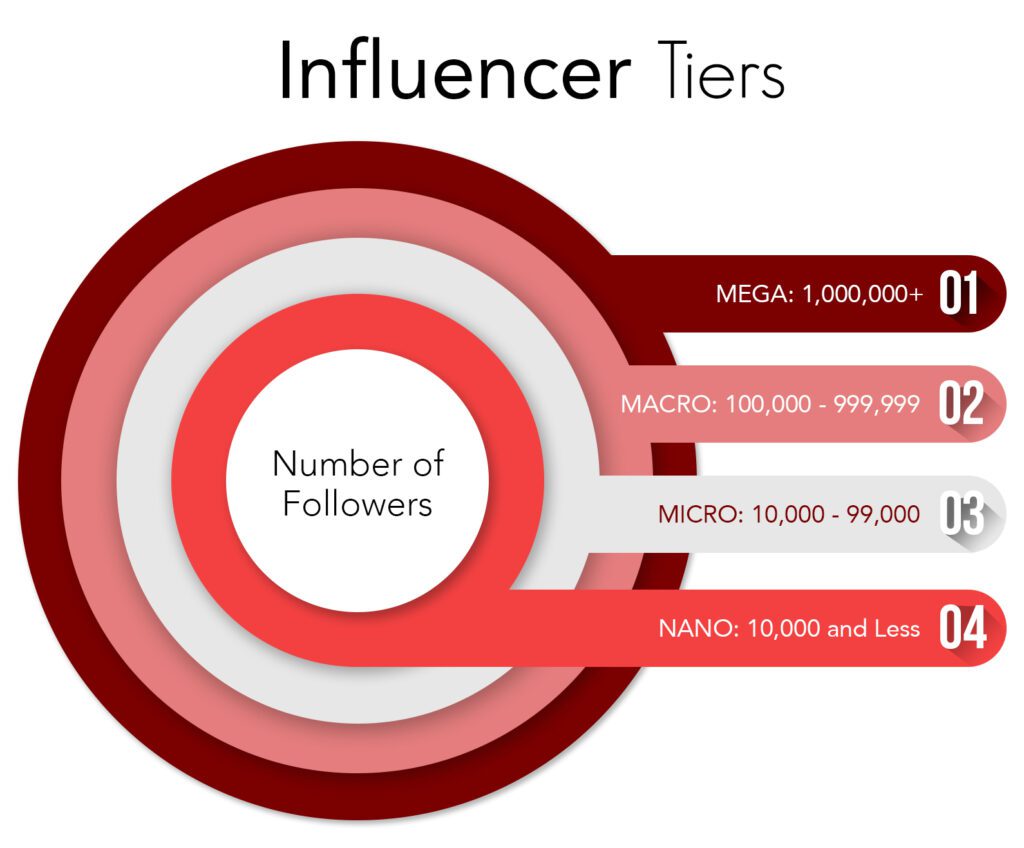In today’s fast-paced digital landscape, consumers are bombarded with a constant stream of advertisements, making it increasingly challenging for brands to stand out.
Amidst this noise, one strategy has proven to be highly effective in building brand trust:
leveraging micro-influencers. These social media personalities, typically with followers ranging from 1,000 to 100,000, offer a unique and authentic way for brands to connect with their audience.
But why are micro-influencers so powerful, and how can they help your brand build trust?
1. Authenticity Over Reach
Micro-influencers may not have the massive follower counts of celebrities or mega-influencers, but what they lack in reach, they make up for in authenticity.
Their smaller audiences tend to be more niche, engaged, and loyal. These influencers often create content around specific interests or passions, making their endorsements feel more genuine.
When a micro-influencer promotes a product, it feels like a recommendation from a friend rather than a paid advertisement, which significantly increases the likelihood that their audience will trust and act on the suggestion.
2. Higher Engagement Rates
Studies have shown that micro-influencers typically enjoy higher engagement rates compared to their larger counterparts.
This means that although their audience is smaller, their content resonates more with followers, leading to more likes, comments, and shares.
For brands, this translates to more meaningful interactions and the potential for a higher return on investment. The more engaged an audience is, the more likely they are to trust the influencer’s recommendations.
3. Cost-Effective Marketing
Partnering with micro-influencers is often more budget-friendly than collaborating with celebrities or top-tier influencers.
This allows brands, especially small to medium-sized businesses, to allocate their marketing budgets more efficiently. With micro-influencers, you can run multiple campaigns across different niches without breaking the bank.
This diversification also spreads your brand message across various audience segments, increasing your chances of building trust with a wider range of potential customers.
4. Targeted Marketing
Micro-influencers are usually experts in their specific niches, whether it’s fashion, fitness, food, or tech. This specialization allows brands to target very specific segments of the market.
For example, if you’re launching a new line of eco-friendly skincare products, partnering with a micro-influencer known for promoting sustainable living can effectively position your brand within that community.
The targeted nature of these partnerships ensures that your message reaches those most likely to be interested in your product, fostering a deeper level of trust.
5. Long-Term Relationships
One of the key advantages of working with micro-influencers is the opportunity to build long-term partnerships.
Unlike mega-influencers who may work with multiple brands, micro-influencers often prefer to establish ongoing collaborations with brands they genuinely believe in. This consistency helps in reinforcing your brand’s message over time and builds a strong, trust-based relationship with the influencer’s audience.
When consumers see a micro-influencer consistently advocating for a brand, it enhances their trust in the product or service.
6. Community Building
Micro-influencers are often seen as community leaders within their niche. They foster a sense of belonging among their followers, creating communities centered around shared interests.
By collaborating with a micro-influencer, your brand can tap into this sense of community, positioning your products or services as integral parts of the audience’s lifestyle.
This not only helps in building trust but also encourages word-of-mouth marketing, as satisfied followers are more likely to share their positive experiences with others.
7. Community Building: Creating Loyal Brand Advocates
Micro-influencers are not just content creators; they are community builders. They have the ability to bring people together around shared interests, creating a sense of belonging among their followers.
This community aspect is particularly powerful in building brand trust, as it fosters a collective sense of endorsement and validation.
When followers see that others in the community are also using and enjoying a product, they are more likely to trust the brand and consider making a purchase themselves.
8. Implementing a Micro-Influencer Strategy: Best Practices
If you’re considering incorporating micro-influencers into your brand’s marketing strategy, here are a few best practices to keep in mind:
Identify the Right Influencers: Take the time to research and select influencers who align with your brand’s values and target audience. Look beyond follower count and focus on engagement rates, content quality, and audience demographics.
Build Authentic Relationships: Approach influencer partnerships as long-term relationships rather than one-off transactions. Engage with influencers on a personal level, offer them creative freedom, and involve them in the brand’s journey.
Focus on Storytelling: Encourage micro-influencers to share personal stories and experiences with your product. Authentic storytelling resonates more with audiences than generic promotional content.
Measure and Optimize: Track the performance of your micro-influencer campaigns by measuring key metrics such as engagement rates, conversion rates, and return on investment. Use this data to optimize future campaigns and make informed decisions.

Conclusion
In an era where consumers are increasingly skeptical of traditional advertising, micro-influencers offer a powerful way to build brand trust.
Their authenticity, higher engagement rates, cost-effectiveness, targeted approach, potential for long-term relationships, and ability to foster community make them invaluable partners for brands looking to connect with their audience on a deeper level.
By harnessing the power of micro-influencers, you can create a more trusted and authentic brand presence in the crowded digital marketplace.


